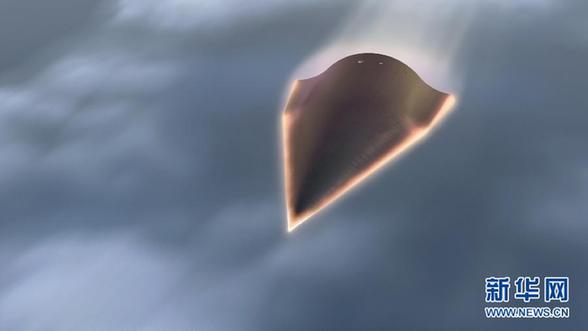U.S. loses contact with hypersonic test plane
 0 Comment(s)
0 Comment(s) Print
Print E-mail
China.org.cn, August 12, 2011
E-mail
China.org.cn, August 12, 2011
U.S. military Thursday? lost contact with the?hypersonic test?plane about half an hour after its launch, which was designed to fly from Los Angeles to New York in 12 minutes, a Pentagon agency said.
 |
|
DARPA's (Defense Advanced Research Projects Agency) Falcon Hypersonic Technology Vehicle 2 (HTV-2) is shown in this undated artist's conception, released August 11, 2011 |
The test of the Mach 20 aircraft was conducted by Defense Advanced Research Projects Agency (DARPA), the Pentagon agency responsible for new technology development for the military.
The unmanned hypersonic glider, called the Falcon Hypersonic Test Vehicle 2 (HTV-2), was launched from Vandenberg Air Force Base in California atop a Minotaur 4 rocket at 7:45 a.m. PDT.
However, around 36 minutes into the flight, DARPA's official twitter account said "Range assets have lost telemetry with HTV2," and attempts to reacquire tracking or telemetry has been unsuccessful.???
Falcon HTV-2 is an unmanned, rocket-launched, maneuverable aircraft that glides through the Earth’s atmosphere at incredibly fast speeds—Mach 20 (approximately 13,000 miles per hour), said DARPA.?
At HTV-2 speeds, flight time between New York City and Los Angeles would be less than 12 minutes. The HTV-2 vehicle is a "data truck" with numerous sensors that collect data in an uncertain operating envelope.
"The ultimate goal is a capability that can reach anywhere in the world in less than an hour," according to DARPA.
Thursday's launch was the second test flight for DARPA's Falcon HTV test program.
DARPA lost contact with its HTV-1 vehicle shortly after it separated from its rocket booster during its first flight?in April 2010.?The HTV vehicles were built for DARPA by Lockheed Martin Corp.
"Assumptions about Mach 20 hypersonic flight were made from physics-based computational models and simulations, wind tunnel testing, and data collected from HTV-2's first test flight -- the first real data available in this flight regime at Mach 20," said Air Force Maj. Chris Schulz, HTV-2 program manager, in a statement.?





